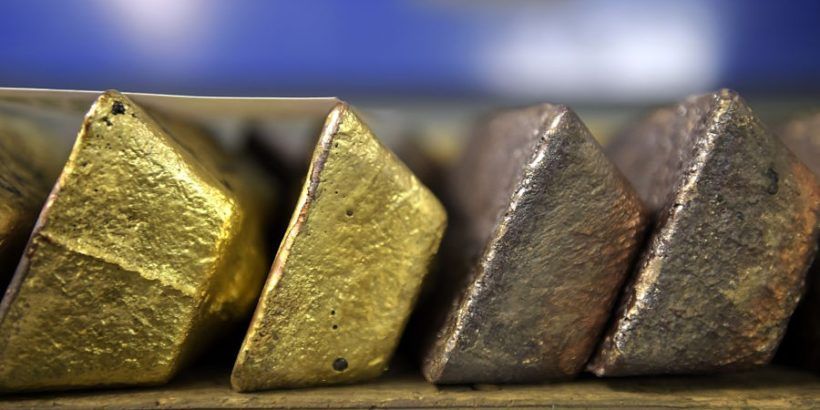The remarkable thing about the yen’s recent performance may not be its almost 4% surge against the dollar Thursday, but the fact that the currency just clocked its best month in about two years.
That exact statistic also applies to gold, which in December notched its largest jump since January 2017. Both assets have continued to climb this year. Meanwhile, bonds of G-7 governments had their best December in a decade, according to a Bank of America Merrill Lynch index.
Put simply, traditional havens are back.
Advertisement
The same myriad of drivers bedeviling equity investors in 2019 are also sending them to safety. While the trade war is showing up in real world data, it’s cropping up in company earnings too, as evidenced by Apple’s guidance cut Wednesday. At the same time, Federal Reserve tightening is sapping liquidity and in the process reigniting volatility in markets. Idiosyncratic risks from the likes of Brexit and Italy’s budget squabble with the European Union are merely compounding the risk-off mood — and adding fuel to the haven trade.
“There are so many worries to investors at the moment — global economic slowdown, China, U.S. shutdown, Brexit, political risk,” Charles St-Arnaud, an investment strategist at Lombard Odier Asset Management in London, said by email. “On top of that, performance has been weak and volatility has increased for most asset classes. So it is understandable that some investors are going to safer havens to wait for some clarity.”
Sudden Surge?
Apple’s gloomy update, which it blamed on weaker China demand, was cited by some as a factor in the yen’s wild jump during the Asian morning. While thin liquidity amplified the move and the currency went on to trim a large chunk of the gains, it remained well up on the day and was poised to advance for the 14th time in 17 sessions.
“Weakness in Asian stocks has resulted in sharp yen buying in thin trade,” Georgette Boele, a currency and precious metals strategist at ABN Amro Bank said by email from Amsterdam. Havens are back in vogue “at the moment with uncertainty about equities and the U.S. government shutdown,” she said.
The currency appears to have more upside potential — it’s among the most undervalued in the G-10 against the dollar, based on the OECD’s purchasing power parity measure. That’s a contrast with 2011, when the yen was overvalued by about 30%, according to the same gauge.

Going for Gold
Sentiment toward gold also brightened in mid-October, when money managers abandoned their record net-short position against the metal as the outlook for the dollar deteriorated.
Since then, investors have piled into exchange-traded funds backed by bullion, which have amassed 126 tons of metal worth $5.2 billion in 60 sessions — the biggest increase over a comparable period in more than 18 months.
A paring of expectations for rate hikes has also contributed to demand, as gold typically falls during periods of monetary tightening because it’s a non-interest-bearing asset.
“Gold is bid due to multiple headwinds” for the world economy, Ole Hansen, the head of commodity strategy at Saxo Bank, wrote in an email. “Stocks, the dollar and bond yields are all down while the risk of further U.S. rate hikes has almost been removed.”

Bonds Bid
Benchmark U.S. Treasury yields have dropped almost 70 basis points since early November as fears of slowing American growth are compounded by trade concerns and the partial government shutdown over President Donald J. Trump’s border wall plans.
The iShares 20-year Treasury exchange-traded fund (TLT) saw a record one-day inflow on Wednesday. More than $1.1 billion poured into the fund, which invests in longer-dated U.S. government bonds.

“Safe havens should continue to outperform this year as a slowdown in the U.S. prompts the Fed to end its tightening cycle in the middle of the year and China’s economy continues to lose momentum,” Simona Gambarini, an economist at Capital Economics in London, said by email.
The risk-off bid is also on display in Europe, where German 10-year yields are around their lowest in 26 months — confounding last year’s bearish forecasts. Investors are increasingly pessimistic about the region’s economy and have pushed expectations for the European Central Bank’s first interest rate hike since 2011 into the middle of next year.
“The rally in the core-EU markets is overdone, but given both the economic and political uncertainty dominating the markets at the moment, the risk is that yields will continue to decline,” Danske Bank chief analyst Jens Peter Sorensen said.
The region’s primary bond market is also sounding a cautious note this year, with issuance dominated by the least-risky types of borrowing, such as covered bonds and securities from AAA-rated organizations such as the European Investment Bank.



